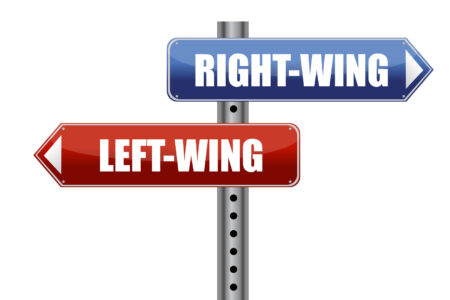
At the turn of the 20th century, French colonial authorities in Vietnam detected bubonic plague in Hanoi. Local administrators had long wrestled with the city’s burgeoning rat population, and signs of plague prompted them to dispatch a force of exterminators to wipe them out. Exterminators were given an incentive to kill: 1 cent for every rat taken off the streets. Soon rats were being slaughtered at a rate of more than 10,000 a day. On one day alone — June 12, 1902 — official records showed that 20,114 rats met their maker.
Yet Hanoi’s rat population showed no signs of declining. The government responded by quadrupling the exterminators’ bounty to 4 cents, with still no apparent affect. Finally, the cull was opened to all citizens, who would be paid 1 cent for each dead rat. All that was required to collect this kill fee was to present a tail to authorities.
The policy produced thousands of rat tails, but it soon became clear that something was amiss. Thousands of rats without tails were spotted roaming Hanoi. Moreover, rat farms began to appear on the city’s outskirts, run by enterprising but unscrupulous locals looking to turn a one-time economic opportunity into an annuity. Faced with the realization that their efforts to reduce the rat population had actually increased it by incentivizing organized breeding, French authorities retreated. They ended the bounty program, resigning themselves to coexistence with the city’s vermin.
We are a long way from French colonial rule over swaths of Southeast Asia, but the instinct of policy-makers to use rewards and punishment to achieve their goals remains. The field of “nudge,” in which behavioural insights are invoked to shape policies, is only the latest expression of this desire to employ incentives to influence how we act. Clearly, any meaningful attempt to solve problems or reform systems requires motivating, rewarding or constraining people and institutions. Yet the lesson of Hanoi’s rats also endures: incentives matter. And as people adjust their behaviour accordingly, we often discover that change comes with unintended consequences.
In Canada, few areas of contemporary public policy so richly illustrate the pitfalls of poorly designed incentives as the system of Aboriginal governance prescribed by the Indian Act. The current state of Aboriginal democracy in Canada could be blamed on any number of villains: corrupt chiefs who engage in patronage politics; a disinterested bureaucracy, with little skin in the game, who collect paycheques on the basis of sustained Aboriginal poverty; or an indifferent political establishment, who talk a good game, but who seem more interested in using Aboriginal communities as props for photo ops rather than meaningful partners in change.
Much of this blame is warranted. And yet this conventional critique confuses the symptoms of a disease with the disease itself. The shortcomings of modern Aboriginal governance are the product of outdated policy and a flawed system driven by perverse incentives. These incentives reward and perpetuate many of the pathologies that plague Aboriginal communities, impeding honest leaders and, at worst, empowering the corrupt.
Rules governing Aboriginal elections are laid out in the Indian Act. Designed well, electoral systems encourage healthy democratic competition, provide a mechanism for the removal of governments and enforce accountability between the elected and the electorate. Poorly designed, they can destabilize governments, empower dishonest leaders and encourage a host of bad behaviours. Unfortunately, many Aboriginal communities suffer from consequences of the latter.
Given the origins of the Act, it is not surprising that the system has failed to serve the needs of Aboriginal people. The legislation was not designed to create conditions for peace, order and good government, but was intended to ensure federal control over daily life and assimilate Aboriginal people into Canadian society. Aboriginal political traditions were suppressed — traditional forms of political organization, such as West Coast potlatches, were outlawed, and tribal leaders unwilling to comply with the Act were jailed.
These shortcomings have long been noted by critics, including Aboriginal people. Many view the electoral rules as perpetuating a colonial relationship with the Crown and see them as a source of division within already fractured communities. As Don Sandberg of the Norway House Cree Nation said in an article for the Frontier Centre for Public Policy: “Nothing divides tribes more than band elections, which are almost always controversial and in many cases fundamentally anti-democratic.”
Given the high stakes involved, it is predictable that some chiefs and councils have fiercely resisted attempts to reform the system. One of the most recent attempts at reform was the failed Bill C-7, which died on the order paper in 2003, largely due to intense lobbying from First Nations chiefs. Early in the development of the bill Indian Affairs Minister Robert Nault was quoted in the Globe and Mail on May 8, 2003, as saying: “It’s my view that the position of the AFN leadership is clearly out of synch with those of the people for whom they claim to speak. Many first nations people are too frightened to speak of their support of the bill for fear of reprisals” (The Conservatives have come back with Bill S-6, a piece of legislation imbued with the same principles as Bill C-7, which completed second reading in June and has been referred to the Standing Committee on Aboriginal Affairs and Northern Development.)
Elections under the current system hinder development and can have a divisive effect on the community. In my own experience working with Aboriginal communities, I have seen how difficult it can be to sustain momentum on projects when new leadership arrives, particularly when that new leadership is opposed to the work of the former administration. Policies mandating two-year election cycles, frequent government turnover and near-constant electioneering have created a system that rewards short-term thinking and incentivizes risk taking rather than prudence, while encouraging divisiveness and cronyism. Furthermore, these structures do not simply motivate or aid those with bad intentions; they act as a barrier to those with good intentions. According to National Chief Shawn Atleo, quoted in the 2012 Report of the Standing Senate Committee on Aboriginal Peoples, this has resulted in an electoral system that is “largely devoid of principles relating to modern and accountable governance.”
There are several problematic provisions prescribed by the Act. Section 74 severs accountability between Aboriginal leaders and their constituents by making chiefs and councils accountable to the minister of Aboriginal Affairs. This severs a crucial link between the elected and electors, undermining legitimacy.
Section 78 mandates a two-year election cycle, which serves to destabilize government and impede long-term planning. In the 2009 proceedings of the Standing Senate Committee, Ontario Regional Chief Angus Toulouse argued frequent elections hinder development and serve to weaken communities. “I think we all recognize that two years is insufficient time to develop, plan and be accountable for results,” he said. “The frequency of elections can also create instability and uncertainty for community members, business ventures and overall community development.”
Currently, First Nations have the ability to create their own election codes, and many (342) have utilized them. However, custom election codes are not a panacea for Aboriginal democracy, particularly if these new codes do little to address the structural issues that affect their communities, or if they simply entrench the current government and provide additional barriers to electoral competition.
Once chiefs and councils are elected, the current system concentrates immense power in their hands. Leaders are relatively unconstrained in their exercise of power, which includes control of band finances and government offices. This puts chiefs and councils in a position to reward friends and punish enemies. Calvin Helin, a prominent Aboriginal lawyer from the Tsimshian Nation explains in Dances with Dependency: Out of Poverty through Self Reliance:
Band Councils are all-powerful. As gatekeepers to the transfer payment gold, they make all the rules. It is not wise to criticize the Band Council if you are reliant upon them for welfare, employment, economic development grants, housing, or whatever. While there are many Band Councils that temper the powers that they exercise over community members, there are some that rule by out-and-out intimidation.
The ability of chiefs and councils to award or withhold jobs, government services and important benefits in order to maximize their chances for reelection and punish political rivals creates conditions where unscrupulous leaders are empowered rather than constrained. Positions on band councils are typically the most stable and lucrative employment available within the community, creating intense competition and making those who acquire these positions reluctant to cede power. The ability to punish political rivals prevents the formation of a meaningful political opposition that can hold government to account. Furthermore, chiefs and councils have broad power to control the logistics and timing of elections, limiting the ability of members (especially those residing off-reserve) to vote, stacking the deck in favour of the incumbent.
These incentives rewards and perpetuate many of the pathologies plaguing Aboriginal communities, impeding honest leaders and empowering the corrupt.
Take the current controversy surrounding this summer’s elections for leaders of the Attawapiskat First Nation (which has a custom election code but has not implemented it). The band council has been accused of attempting to silence political opposition by requiring that all ballots in the election be cast in person, a challenge for the 1,862 members who live off-reserve and can’t afford to make the trek to the isolated First Nation. As former Attawapiskat resident Jocelyn Iahtail put it, quoted in an August 27 article in the National Post, “They [the Council], of all people, should understand poverty and make it possible for off-reserve members to have a voice.” The incumbent chief was reelected with 214 votes out of a community of 3,351, hardly a ringing endorsement. Not surprisingly, as the National Post reported on August 30, community members have said they plan to appeal the results, which they argue violate the Supreme Court of Canada’s 1999 Corbiere decision, which protects the right of all members to vote in band elections.
Any leadership — Aboriginal or other — that operates under these conditions is being encouraged to act badly and has strong incentives for electoral fraud, cronyism and corruption.
Few jobs in Canadian politics are as challenging as leading an Aboriginal community. Overcoming high rates of poverty, inadequate infrastructure and limited economic opportunity would be difficult under optimal conditions, and in many Aboriginal communities, conditions are far from optimal. But these conditions persist, in part, because chiefs and councils are faced with a dilemma: why reform the system that is the basis of your political power and confers upon you immense benefits, even if that system has negative consequences for the community as a whole? While we would hope that political leaders always act in the best interests of their constituents regardless of their own ambitions, any honest appraisal of politics (both Aboriginal and not) will show this is rarely the case. Even those who do want to change the system are often faced with the problem of choosing between their own political survival and their desire to serve the community.
To illustrate this dilemma, put yourself in the position of a newly elected chief. The challenges faced by the community are complex and structural in nature: high rates of poverty compounded by geographic isolation, a lack of infrastructure and limited government capacity. These types of challenges would be difficult to address in a decade, let alone two years.
Yet you are determined to address these issues by taking a long-term and strategic approach to economic development and governance. No more quick fixes or political games; you plan to do away with the corruption that has divided your community.
Then reality sets in. You come to realize that despite your fresh ideas and even fresher idealism, you are inexperienced and do not fully comprehend the complex web of agencies, businesses, departments and relationships you must administer. It may take months to master the reporting requirements mandated by the federal government. You also discover that your visionary agenda made for good campaigning and has gained you support in the community, but it also raised expectations and provided a benchmark by which you will be judged.
Compounding these challenges is the fact that your own ascension to power came at the expense of political rivals from within the community, many of whom you are now dependent on to implement your agenda. All, as we have noted, with less than two years to make progress, mend political fences and get reelected, lest some other leader unseat you and undo your good work.
In order to achieve your vision you will need allies on council and in administration. How can you gain their support? While some agree with your vision, others are skeptical, and a few are openly antagonistic, already polishing their knives and measuring the drapes in your office. Your political strategy is not as successful as you had anticipated, and the pressure to deliver is growing daily. At this point, even a principled leader would begin to contemplate less than noble political calculations on whether ends justify means. Should I use my position to reward friends and woo enemies (as prime ministers and premiers do) if it leads to benefits for the broader community? Should I give the coveted job of head of the economic development agency to the qualified candidate, or to the councillor’s brother, whose support I need in an upcoming vote? Who should receive scarce housing resources, the deserving grandmother or the well-connected community activist? What use are my noble ideals if they lead to defeat, condemning my community to turmoil and perhaps paving the path to power for someone with — in my mind — less noble motivations?
How quickly doing the wrong thing seems so right, and doing the right thing seems so wrong.
The Indian Act was intended to assimilate Aboriginal people into Canadian society.
When your profession entails making laws and allocating scarce resources on behalf of others, navigating the fine line between your own ambitions and the needs of your constituents is never straightforward. The world you inhabit is murky and you are judged in terms that are black and white. This tension between idealism and pragmatism lies at the heart of all political systems but is more acutely felt in Aboriginal communities due to the immense power placed in the hands of chiefs and councils and the lack of countervailing forces to check government authority, compounded by bad incentives.
If poor incentives lie at the heart of many of the current shortcomings of Aboriginal democracy, it would follow that replacing them with proper incentives is the natural remedy. These incentives should encourage incremental economic and capacity development over short- term risk taking; promote consensus building over divisiveness; ensure accountability between the electors and the elected; and promote the development of a credible political opposition that can hold government to account. These are some of the changes:
- The elimination of the two-year electoral term. The current two-year electoral term mandated by the Act is insufficient for chiefs and councils to develop and implement policy, and the short time creates strong incentives for unnecessary risk taking, perpetual electioneering and electoral fraud.
- Improved provision for the inclusion of off-reserve members’ votes in elections. According to the 2011 Census, over 50 percent of Canada’s First Nations people live off-reserve, and ensuring their voices are heard, through either Internet voting or mail-in ballots will incentivize potential leaders to broaden their political support to the largest constituency possible, encouraging policies that promote broad prosperity, rather than using the levers of power to reward friends and punish enemies.
- Increased financial and political transparency for chiefs and band councillors. Ensuring that band members are fully informed of the political and financial ties of their political leadership (along with that of the leadership of related band businesses and agencies) will help to prevent many of the abuses of cronyism and mismanagement. This would include ensuring that all community members receive either an electronic or a hard copy (for those without internet access) of the band’s audited financial statements, along with disclosure of any real or potential conflicts of interests that exist. In certain cases, this may require chiefs and councils (and potentially their immediate family members) to disclose their personal assets or put them into a blind trust to ensure policy decisions are made to enrich the community, not the leadership.
A final, more controversial proposal that could “nudge” Aboriginal democracy in the right direction would utilize current legislation that allows chiefs and councils to create custom election codes, but modify the legislation to make it opt-out rather than opt-in, and subject the final election code (whether custom or not) to approval by the community through a referendum. Any chief and council who feel the current system prescribed in the Act is serving the needs of the community would have to make their case directly to their constituents. Otherwise, the chiefs and councils would be required to develop a custom election code that ultimately their community would approve. What could be more democratic than that?
While these changes are long overdue, the benefits of a reformed electoral system will be most fully realized if it is undertaken as part of a wholesale reimagining of the relationship between Aboriginal peoples and the government of Canada, including addressing thorny issues such as treaty rights, private property, education and self-government. This approach will require commitment, courage and sacrifice by Aboriginal leaders and federal politicians, but it holds the greatest potential for improving the lives of Aboriginal people and ensuring a fair, prosperous and inclusive Canada.
With thanks to Laura Hazlett for her valued contribution.







